LATEST NEWS
SHOP NEWS
Stay Updated with the Latest Shop News
Your Source for Automotive Tips, Updates, and More
At Jeremiah’s Automotive Services, we’re committed to keeping our customers informed and up to date. From helpful maintenance tips to the latest news about our shop, you’ll find everything you need right here. Check out our articles below to stay in the know about industry trends, vehicle care advice, and important updates about our services. Stay connected and make the most of your automotive experience with Jeremiah’s.

If your business relies on vehicles to operate, whether you have two work vans or a fleet of trucks, keeping those vehicles running smoothly is critical. Breakdowns mean delays, lost revenue, and unhappy customers. That's where fleet maintenance comes in. For businesses across Heath and Licking County, working with a local auto shop can make all the difference. This breakdown explains why investing in routine fleet maintenance saves you time, money, and stress, and why partnering with a local shop gives you the advantage. What Is Fleet Maintenance and Why Does It Matter? Fleet maintenance is more than just oil changes and tire rotations. It's a proactive strategy to keep your business vehicles in peak condition so they can perform reliably every day. If you wait for a breakdown to happen, you're already losing time and money. But with scheduled fleet service, you reduce the risk of surprise repairs and keep your business running on time. Fleet maintenance Heath OH and commercial vehicle repair Licking County services provide essential business vehicle support. Benefits of Working With a Local Fleet Maintenance Provider National chains may offer fleet programs, but when you work with a local shop, you get something they can't offer: personalized service, fast turnaround, and accountability. Here's what sets local fleet service provider Heath shops apart: Faster Turnaround Times When you call a local shop, you're not waiting in a queue behind dozens of other locations. They can get your vehicle in quickly, diagnose the problem, and get it back on the road with minimal downtime. Custom Maintenance Schedules Local shops track the service history of every vehicle in your fleet and build maintenance schedules tailored to how you use them, not just what the manufacturer recommends. ASE-Certified Technicians Professional teams have the training and experience to handle complex diagnostics, repairs, and preventative maintenance for all types of fleet vehicles, including vans, pickups, and light-duty trucks. Consistent Communication You're not just another number. Professional shops will keep you in the loop and help you prioritize repairs based on what's urgent and what can wait. Commercial fleet service Heath OH and small business vehicle maintenance benefit from local auto shop for fleets partnerships. What Does a Fleet Maintenance Plan Include? Fleet programs are built to reduce vehicle downtime, extend lifespan, and lower your total cost of ownership. A typical plan may include: Oil changes and fluid checks Brake inspections and replacements Transmission servicing Battery and charging system checks Suspension and alignment services Tire rotations, balancing, and replacements Engine diagnostics and performance checks Heating and A/C system repairs You don't have to manage multiple appointments or keep your own logs. Professional shops will handle it for you and notify you when service is due. Scheduled fleet maintenance Heath OH includes oil change for commercial vehicles and brake service fleet trucks as core services. Why Preventative Maintenance Pays Off Every mile your vehicle runs without proper maintenance increases the chance of failure. For businesses that depend on their fleet, that risk is too high. Here's how preventative fleet maintenance helps: Avoids Major Repairs : Catching issues early prevents expensive fixes later. Extends Vehicle Lifespan : Well-maintained vehicles last longer and perform better. Improves Safety : Reduces the risk of accidents caused by worn brakes or tires. Boosts Efficiency : Engines run cleaner, tires wear evenly, and fuel economy improves. Protects Your Brand : A breakdown or delay reflects poorly on your business. Preventative fleet care Heath OH and commercial vehicle upkeep provide cost-saving vehicle maintenance benefits. Fleet Services for All Industries Professional shops work with companies across a wide range of industries, including: Construction and landscaping HVAC and plumbing companies Delivery services Real estate and property management Electrical and contracting firms Small business fleets of 2 to 20+ vehicles No matter the size of your fleet, professional automotive services have a solution to keep you rolling. Contractor fleet repair, HVAC van service Heath, and delivery vehicle maintenance Licking County support diverse business needs. Flexible Scheduling and Priority Service Professional shops understand how important flexibility is for business owners. That's why they offer: After-hours key drop Flexible appointment windows Digital vehicle inspections Transparent reporting on service needs Priority service for fleet accounts You'll never have to guess what's wrong or worry about hidden costs. Professional shops will show you photos and reports of every issue and help you make smart decisions. Finding a Trusted Fleet Partner in Heath, Ohio Professional automotive services proudly serve as the go-to choice for local businesses in Heath and across Licking County. With decades of experience and teams committed to quality, local shops make fleet maintenance simple and stress-free. If your business relies on vehicles, professional consultation can help. Custom maintenance plans protect your vehicles and your bottom line. Schedule a Fleet Consultation Today Whether you're looking to switch from a national chain or setting up fleet service for the first time, professional automotive services are ready to help. Contact local shops today to schedule a consultation and see how much smoother your business can run with a reliable fleet maintenance partner. Professional shops are ready to keep your business moving with comprehensive fleet maintenance solutions.
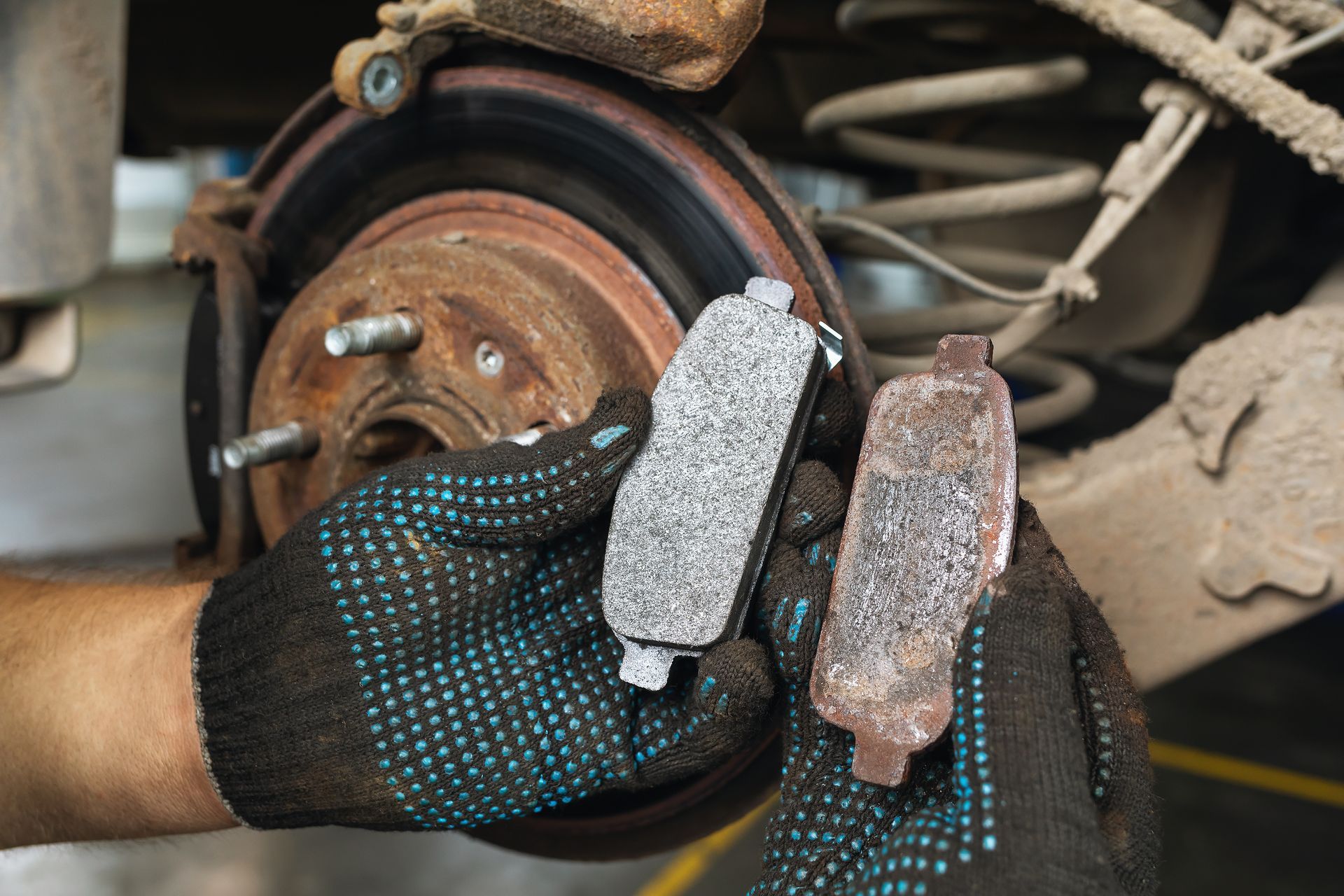
Your vehicle's braking system is one of the most important safety features you rely on every time you drive. Whether you're commuting through Heath, taking the highway to Columbus, or just running errands locally, you need to trust that your brakes will respond properly. When they don't, it puts you, your passengers, and everyone else on the road at risk. Brake problems don't always start with a full failure. They usually begin with small signs that something is off. These are the top warning signs of brake trouble so you can catch the issue early and schedule service at a trusted auto repair shop in Heath, Ohio. Squealing or Screeching Brake Noises If you hear a high-pitched squeal when you apply the brakes, that's a built-in warning from your brake pads. Manufacturers design pads with wear indicators that create that sound when the pad is worn down to a certain level. It's not an emergency, but it is a clear signal that you need to replace your brake pads soon. Letting this go too long can lead to damage to your rotors, turning a minor repair into a more expensive fix. Grinding Sounds When Braking A grinding noise means you've likely worn your brake pads completely down. What you're hearing is metal-on-metal contact between the calipers and rotors. At this point, your braking performance is seriously compromised, and the repair will likely require new pads and new rotors. If your car is grinding when you brake, do not wait. Bring it to a mechanic in Heath immediately. Soft or Spongy Brake Pedal Problems Your brake pedal should feel firm and responsive. If it sinks to the floor or feels spongy when you press it, you may have air in the brake lines, a leak in the brake fluid system, or a problem with the master cylinder. All of these issues can impact how quickly and safely your car can stop. A soft pedal is not just annoying, it's dangerous. Car Pulls to One Side While Braking If your car veers to the left or right when braking, it may be a sign of uneven brake pad wear, a stuck caliper, or issues with brake hose pressure. This can also affect your tires and alignment over time. It's another example of how brake issues can lead to other costly repairs if ignored. Shaking or Vibrations When You Stop A vibrating brake pedal often indicates warped rotors. Rotors can become uneven from excessive heat, which often comes from aggressive driving or not replacing pads in time. This shaking is not just uncomfortable, it means your brakes aren't working evenly, which affects stopping power and stability. Dashboard Brake Warning Light Activation When your dashboard brake light turns on, it's telling you something is wrong. This could be as simple as low brake fluid, or something more serious like a worn-out sensor or ABS system failure. If that light stays on while driving, have your brake system inspected as soon as possible. Burning Smell While Driving A sharp, chemical smell after hard braking may mean your brakes are overheating. This often happens if you're riding the brakes downhill or the calipers are sticking. If you smell burning near your wheels, pull over and let your brakes cool down. If the smell continues or returns regularly, it's time to get them checked. Longer Stopping Distances Does it take longer than usual for your car to come to a complete stop? Even if there are no noises or dashboard lights, a slow response when braking is a serious problem. This could be caused by worn pads, leaking brake fluid, air in the system, or failing ABS components. The more you drive with failing brakes, the more risk you take every time you hit the road. Why You Should Never Ignore Brake Issues Brake problems rarely fix themselves. Driving on worn or failing brakes can result in increased wear on other parts, reduced vehicle control, higher repair costs, and greater risk of accidents. The good news is most brake issues are quick and affordable to fix when caught early. Professional automotive services use high-quality parts and modern diagnostic tools to find and fix brake problems fast. Professional Brake Service Solutions If you've noticed any of these warning signs, don't wait until the problem gets worse. Professional brake services include full brake inspections, pad and rotor replacements, brake fluid flushes, and complete system diagnostics. Whether your vehicle is making noise or your dashboard light is on, experienced technicians will get to the root of the issue and keep you safe on the road. Professional auto repair serves drivers in Heath, Newark, Granville, and surrounding areas. With competitive pricing, quick turnaround times, and friendly service, local automotive shops provide trusted partnership for all brake system needs. Schedule Your Brake Inspection Today Brakes are not something to gamble with. If you have any doubts about your car's stopping power, book an appointment with a qualified automotive service provider in Heath, Ohio. Professional brake service will take care of your vehicle and help you drive with confidence.

Putting off vehicle maintenance may seem harmless, especially when everything appears to be running fine. But skipping scheduled services can lead to much bigger problems down the road. What starts as a small issue like an overdue oil change or worn brakes can snowball into costly repairs or even leave you stranded on the side of the road. If you drive in or around Heath, Ohio, staying ahead of your car's maintenance is one of the best ways to protect your investment and avoid surprise repair bills. Delayed maintenance leads to preventable breakdowns that could have been avoided with routine care. Why Routine Maintenance Matters for Your Vehicle Every vehicle comes with a maintenance schedule set by the manufacturer. This schedule is designed to keep your car running efficiently and to catch problems before they become serious. Preventative Maintenance Heath OH : Ignoring this schedule doesn't just put wear and tear on your vehicle, it can also lower fuel efficiency, decrease resale value, shorten engine and transmission lifespan, and void your warranty. Car Service Schedule and Auto Shop Heath Ohio professionals recommend following manufacturer guidelines to prevent costly repairs. Oil Change Neglect Leads to Engine Problems Your engine depends on clean oil to stay lubricated and cool. Delaying an oil change leads to sludge buildup, increased friction, and overheating. Oil Change Heath OH : Short term effects include noisier engine operation and increased fuel consumption. Long term consequences include engine wear, loss of compression, or even complete engine seizure. Engine repairs are among the most expensive fixes a vehicle can need. Engine Damage From Old Oil : Regular oil changes at a car maintenance shop Heath prevent these expensive problems. Brake Service Delays Create Safety Hazards Brakes are easy to overlook until you hear squealing or feel the pedal go soft. But those early warning signs are your chance to fix a small issue before it becomes dangerous. Brake Service Heath OH : Brake pads wear out gradually, but delaying replacement can damage the rotors. Waiting too long may lead to grinding metal-on-metal contact. Eventually, you'll need a full brake system replacement instead of just pads. Worn Brake Pads and Squeaky Brakes should be addressed immediately to prevent more extensive damage. Tire Maintenance Affects Multiple Vehicle Systems Underinflated or worn-out tires can reduce gas mileage, increase stopping distance, and lead to dangerous blowouts. Driving too long on bad tires wears unevenly, affecting alignment and suspension, hurts fuel economy, and increases the chance of hydroplaning or sliding. Tire Rotation Heath OH : Replacing tires on time and rotating them regularly is one of the most cost-effective ways to avoid more expensive repairs. Tire Wear and New Tires Heath Ohio services help maintain vehicle safety and performance. Transmission Problems From Skipped Fluid Services Your transmission relies on clean, cooled fluid to shift properly. Skipping transmission fluid services can lead to sluggish shifting, grinding, or complete failure. Transmission Repair Heath OH : A transmission replacement can cost thousands. By comparison, routine fluid flushes are inexpensive and prevent that level of damage. Transmission Flush and Auto Maintenance Shop services protect your transmission investment. Cooling System Neglect Causes Engine Damage Coolant helps prevent your engine from overheating. Skipping coolant flushes or ignoring a slow leak can quickly escalate. Radiator Service Heath OH : Symptoms of cooling system failure include high temperature gauge readings, coolant pooling under your vehicle, and white smoke or steam from the hood. Coolant issues can damage your head gasket, water pump, or even warp your engine block. Coolant Flush and Engine Overheating prevention requires regular cooling system maintenance. Suspension and Alignment Issues Multiply Over Time If your car pulls to one side, the steering wheel is off-center, or you feel bouncing when driving, those are signs your suspension or alignment is off. Wheel Alignment Heath OH : Putting off repairs can cause uneven tire wear, reduced handling and safety, and damage to tie rods, ball joints, and struts. What could have been a simple alignment turns into a full suspension overhaul if ignored. Suspension Service and Uneven Tire Wear problems compound when maintenance is delayed. Real Examples of Maintenance Procrastination Costs Let's break it down with specific examples of what procrastination costs: Skipping an oil change (Small cost) can turn into an engine replacement ($4,000+) Delaying brake pad replacement ($200) can lead to rotor and caliper replacement ($1,200+) Ignoring tire rotation ($50) can reduce tire lifespan by 10,000+ miles Maintenance is far cheaper than repairs. When you wait, you pay more in parts, labor, and time off the road. How to Stay on Track With Maintenance in Heath, Ohio The best way to avoid large repairs is simple: follow your car's maintenance schedule. Professional technicians can check your car's service history, review your manufacturer's recommendations, and create a custom maintenance plan. Auto Maintenance Heath OH : Comprehensive services include oil changes, brake inspections, fluid checks, tire rotations, and alignments. Whether you need service now or just want to stay ahead, professional maintenance makes car care easy and affordable. Vehicle Upkeep and Car Inspection Heath Ohio services help prevent costly breakdowns. Professional Automotive Care Prevents Costly Repairs Car maintenance isn't always convenient, but it's necessary if you want to avoid sudden breakdowns and expensive repairs. ASE-certified technicians can inspect your vehicle and take care of any issues before they grow. If it's been a while since your last service, schedule an appointment with a trusted automotive service provider in Heath, Ohio. Professional care helps protect your investment and keep your car running reliably for years to come.

When your car starts acting up, it can be tempting to wait and see if the issue goes away. But ignoring early warning signs can turn a small problem into a major repair bill. If you're driving around Heath, Ohio and notice something unusual with your vehicle, it's worth getting it checked out right away. Delaying auto repairs not only risks more damage, but it can also jeopardize your safety on the road. Dashboard Warning Lights Signal Problems One of the easiest ways your car tells you something's wrong is through dashboard warning lights. If you see the check engine light, oil pressure light, battery light, or brake system warning, it's not something to ignore. Check Engine Light Heath OH : A flashing check engine light usually signals a serious problem, like a misfire that could damage the catalytic converter. Oil Pressure Warning : An oil light means your engine could be running with low or no oil, which can cause complete engine failure if not addressed quickly. Brake System Warning : The brake warning light often means worn brake pads or a leak in the brake system. Dashboard warning lights auto diagnostics Heath Ohio provide immediate alerts when your vehicle needs attention. Strange Noises While Driving Indicate Problems If you hear grinding, squealing, knocking, or clunking, something under the hood or chassis is not working properly. Car Making Noise Heath OH : Grinding brakes usually mean your pads are worn through, which can damage the rotors. A squealing sound when you start the engine could point to a loose or worn serpentine belt. Clunking over bumps can be a sign of suspension issues, like a failing strut or control arm. Unusual sounds are one of the most common reasons people bring their cars into auto repair shops. They rarely go away on their own, and waiting too long often leads to more expensive repairs. Suspension Repair Heath : Grinding brakes and suspension problems require professional attention to prevent further damage. Fluid Leaks Under Your Car Need Attention Seeing fluid under your car should always prompt a visit to an auto repair shop. Each type of leak usually signals a different issue. Fluid Leak Car Heath OH : Green or orange fluid indicates a coolant leak, which can cause overheating. Red or brown fluid suggests transmission or power steering fluid problems. Clear fluid is usually water condensation from the A/C system, which is normal. Dark brown or black fluid indicates an oil leak. If your car is leaking any kind of fluid regularly, it's not something to brush off. It could lead to overheating, transmission failure, or poor braking performance. Oil Leak Repair and Coolant Leak Heath Ohio services address these common fluid leak problems. Vibration or Shaking at Certain Speeds Feeling your steering wheel shake or the car vibrate can point to a range of issues, including unbalanced tires, worn suspension components, brake rotor problems, or engine misfires. Vehicle Vibration Heath OH : If your car vibrates at high speeds or pulls to one side, it's time to get it checked. Vibrations often start small and get worse the longer they're ignored. Unbalanced Tires and Brake Rotor Repair are common solutions for vehicle vibration problems. Burning Smell or Smoke Requires Immediate Action If you smell something burning or see smoke coming from the engine bay or exhaust, stop the car and have it inspected immediately. Burning smells could be caused by oil dripping onto a hot engine part, overheated brakes, electrical shorts, or transmission fluid leaks. Burning Smell From Car and Smoke From Engine Heath OH : Smoke or a strong chemical odor should never be ignored. It could indicate a fire risk or major mechanical failure. Emergency auto repair Heath services should be contacted immediately when you notice burning smells or smoke. Difficulty Starting or Stalling Problems If your car is taking longer to start, turning over multiple times, or stalling when you're at a stoplight, those are all signs of potential engine or electrical problems. This might be related to a failing battery or alternator, bad spark plugs or fuel injectors, or starter motor issues. Car Won't Start Heath OH : Even intermittent stalling or start-up issues should be addressed quickly, especially before winter when battery problems tend to get worse. Engine Stalling and Battery Replacement Heath Ohio services help resolve starting problems. Loss of Power or Poor Acceleration When your car feels sluggish or doesn't respond like it used to when you press the gas pedal, it could be related to fuel delivery problems, transmission trouble, clogged air filters, or throttle issues. Poor Acceleration Heath OH : Loss of power is often gradual but can indicate serious internal issues that need to be diagnosed by a professional auto technician. Auto repair shop Heath Ohio and fuel system repair services can diagnose and fix power loss problems. Pulling, Drifting, or Poor Handling If your car pulls to one side, feels loose on the road, or you're constantly adjusting your steering to stay in your lane, your vehicle likely has wheel alignment issues, suspension wear, tire pressure problems, or brake caliper issues. Wheel Alignment Heath OH : Driving with poor alignment or bad suspension can cause premature tire wear and increase the risk of accidents. Professional suspension repair and car pulls while driving diagnostics can identify and fix these issues before they become bigger problems. Soft or Spongy Brake Pedal Your brakes should feel firm and responsive. If your brake pedal goes to the floor, feels spongy, or takes longer to stop the car, it's not safe to keep driving. Common causes include air in the brake lines, low brake fluid, worn brake pads or rotors, or leaking brake lines. Brake Repair Heath OH : Brake issues should be considered urgent. Professional technicians can inspect your braking system and make sure it's safe for the road. Soft brake pedal and car slow to stop problems require immediate professional attention. Frequent Overheating If your temperature gauge keeps climbing, or you see steam coming from the engine, your car is overheating. This could be from a coolant leak, a broken water pump, a stuck thermostat, or a failing radiator. Engine Overheating Heath OH : Overheating can warp engine components and cause major damage. Don't wait until the car won't start at all. Bring it in before it turns into a full engine replacement. Radiator repair and coolant flush Heath Ohio services prevent overheating problems. Schedule Professional Auto Repair Services Catching car issues early can save you money and keep you safe on the road. If you're experiencing any of these signs, schedule an appointment with a trusted auto repair shop in Heath, Ohio. Professional shops handle everything from brake repair and engine diagnostics to fluid leaks and transmission service. With ASE-certified mechanics and a commitment to quality, experienced technicians make it easy to get your car back in shape and ensure repairs are done right the first time.
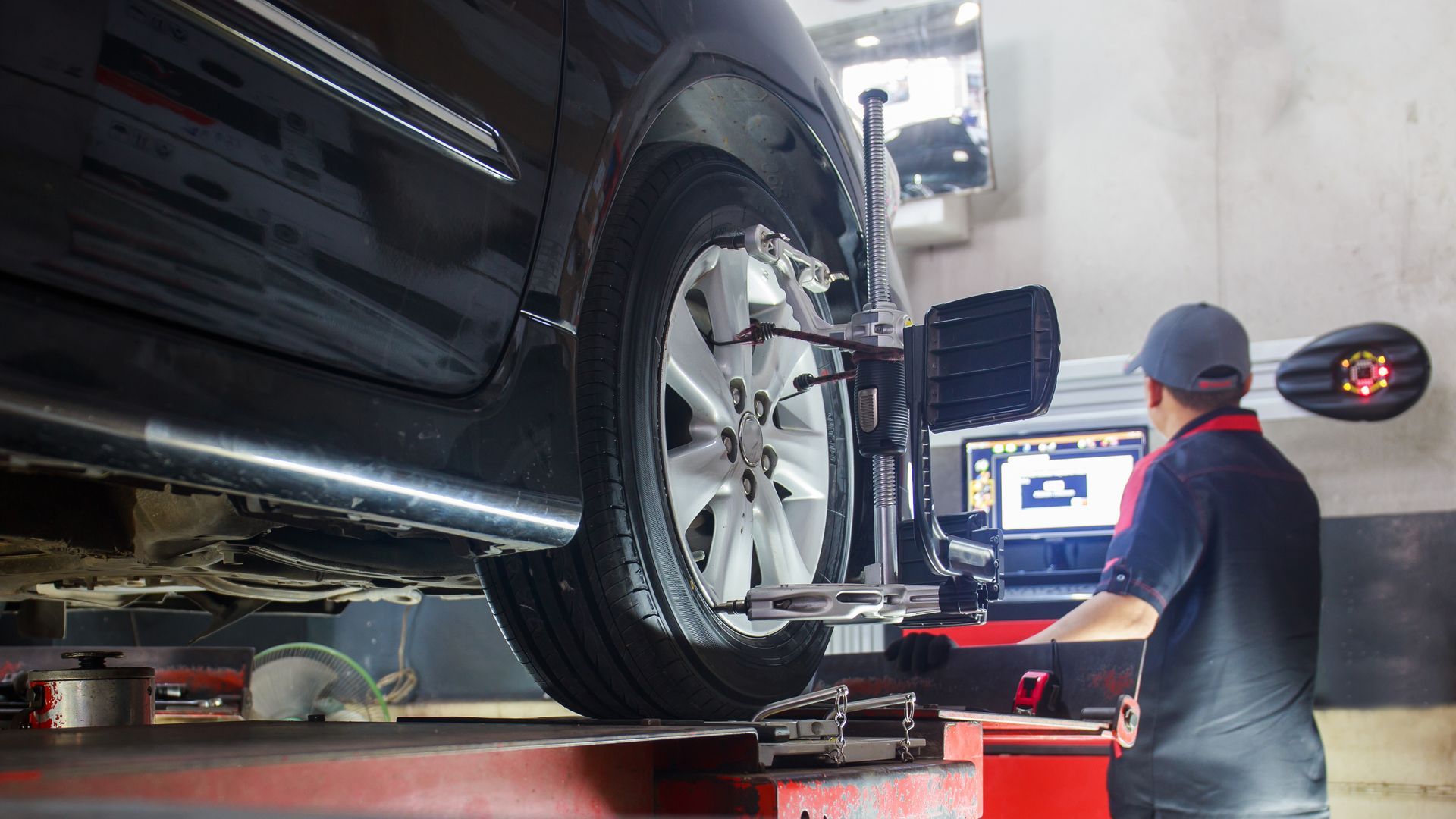
Your vehicle’s suspension and alignment affect how it handles, how your tires wear, and how comfortable your ride feels. Many drivers don’t think about these systems until something feels off, but catching issues early can prevent bigger problems and higher costs down the line. Below are signs to look for, reasons these issues are common in places like Heath, Ohio, and how regular inspections from a trusted shop like Jeremiah’s Automotive can help. Key Signs You Might Need an Alignment or Suspension Service • Vehicle pulls to one side while driving • Uneven or rapid tire wear • Steering feels loose or off-center • Bumpy or shaky ride on roads that used to feel smooth • Squeaking, clunking, or knocking sounds over bumps • Difficulty steering or changes in how the wheel responds Each of these signs could indicate an issue with alignment, shocks, struts, or other suspension components. How Suspension Systems Work Your suspension is made up of shocks, struts, springs, and control arms. It’s designed to absorb bumps in the road and keep your tires firmly in contact with the ground. A damaged suspension system not only makes your ride less comfortable but can also impact steering and tire wear. In Ohio, changing weather, potholes, and road salt all contribute to accelerated wear. Spring thaw and freeze cycles often leave roads in rough shape, especially in areas around Licking County. These conditions make regular suspension checks more important than in other parts of the country. What Vehicle Alignment Really Means Alignment refers to how your wheels are positioned relative to each other and the frame of your vehicle. When your wheels are aligned properly, they’re pointed in the same direction and your vehicle drives straight without pulling or drifting. Three key components are checked during an alignment: • Toe – the angle at which tires point inward or outward • Camber – the tilt of the wheels from top to bottom • Caster – the angle of steering axis when viewed from the side If any of these are off, it can cause the symptoms listed earlier and will wear down tires much faster. When to Get Your Alignment Checked • After hitting a pothole or curb • After suspension components are replaced • When you install new tires • If you notice the steering wheel is off-center while driving straight • Every 12,000 to 15,000 miles as a routine part of maintenance Not every vehicle needs frequent alignments, but getting it checked periodically helps extend the life of your tires and keeps your steering feeling right. Suspension and Alignment in Heath, Ohio In places like Heath and Newark, the condition of the roads changes with every season. Winter causes frost heave. Spring reveals potholes. Summer construction can leave behind uneven pavement. All of this takes a toll on your suspension and wheel alignment. Local drivers also face a mix of urban, suburban, and rural roads. Some are smooth and well-maintained. Others are full of dips, gravel, or patched pavement. This kind of variation makes alignment and suspension checks even more important for preserving vehicle health. What Happens During a Professional Inspection When you bring your vehicle in for a suspension or alignment check, here’s what the technicians at Jeremiah’s Automotive typically look at: • Visual inspection of shocks, struts, bushings, and control arms • Check for fluid leaks or damaged seals • Inspect tire wear patterns for signs of misalignment • Use alignment equipment to measure and adjust wheel angles • Road test to confirm the vehicle drives straight and handles properly If repairs are needed, you’ll get an explanation of which components are worn and what replacement involves. The focus is always on making sure your vehicle handles safely and predictably. How Often Should Suspension Be Replaced Suspension components don’t wear out as often as things like brakes or tires, but they don’t last forever. On most vehicles, shocks and struts last anywhere from 50,000 to 100,000 miles depending on road conditions and driving habits. If you do a lot of highway driving on smooth roads, they may last longer. But if your routes include rough streets, gravel, or frequent hauling, wear will happen faster. Having a shop check your suspension at least once a year helps prevent surprises. Tire Health Depends on Alignment Proper alignment doesn’t just affect handling. It also plays a big role in how your tires wear. Misaligned wheels can cause: • Feathering – tread ribs develop a saw-tooth pattern • Camber wear – one edge of the tire wears down faster • Toe wear – inner or outer edges wear more than the middle Tires aren’t cheap. Getting an alignment is a much smaller investment compared to replacing a full set of worn tires early. Local Shops vs. National Chains Some drivers go to large chains for alignment deals, but there are benefits to working with a local shop. Jeremiah’s Automotive isn’t just focused on hitting a number of cars per day. Their team takes time to make sure each vehicle is checked properly. Because they’re local to Heath, they know what drivers are up against with the roads in this part of Ohio. There’s also more accountability. If you have questions or need to come back for a recheck, you’re not dealing with a national customer service hotline. You’re working with people who know your name and remember your vehicle.

Small business owners rely on their vehicles every day. Whether it’s a single service van or a fleet of work trucks, keeping those vehicles in top condition matters. In Licking County, where businesses span industries like plumbing, HVAC, electrical work, landscaping, and delivery services, vehicle downtime can mean missed appointments and lost income. That’s where fleet maintenance comes in. What Fleet Maintenance Actually Covers Fleet service isn’t just about getting an oil change when the light comes on. It’s a structured, consistent approach to keeping every vehicle in your business ready to go. Here’s what it usually includes: Regular oil changes and fluid checks Brake inspections and replacement as needed Tire rotations, replacements, and alignments Diagnostics and engine performance checks Suspension and steering system evaluations Heating and air conditioning service Transmission and drivetrain maintenance Battery and electrical system checks Some businesses might need this level of attention every few weeks. Others might go longer between service intervals depending on how often their vehicles are used. What matters is that it’s consistent, scheduled, and handled by a team who knows how to work with commercial accounts. Why Fleet Maintenance Is Different Than Standard Auto Service The biggest difference comes down to volume and coordination. A shop that offers fleet service isn’t just fixing one vehicle at a time. They’re helping your entire operation stay on the road. You might also be managing multiple vehicle types—light-duty trucks, cargo vans, or even SUVs. Each has different service needs and wear patterns. That’s where working with a shop like Jeremiah’s Automotive becomes valuable. They handle individual customers daily but also understand how to manage multiple units on a maintenance plan. Time Matters More with Fleet Work Downtime affects businesses differently than individuals. When your personal car is in the shop, you can carpool or work from home. But when a work van is down, your tech isn’t getting to job sites. Delivery routes get missed. Customers call and reschedule. A good fleet service shop knows that. That’s why shops that work with business clients often offer: Priority scheduling Faster turnaround times Flexible drop-off and pickup options Clear tracking of what was done and what’s coming up In some cases, local businesses even choose to schedule preventive maintenance in the evening or early morning to keep disruption to a minimum. The Benefit of Local Support Large fleet management companies sometimes outsource work to chains or national vendors. But in places like Heath, Newark, and greater Licking County, having a relationship with a local repair shop still makes a difference. A shop like Jeremiah’s Automotive knows the local roads, the kinds of wear vehicles experience here, and what Ohio winters can do to brakes, batteries, and suspension systems. You’re not calling a hotline—you’re talking to someone who knows your business and your vehicles. Why Preventative Maintenance Is Cheaper in the Long Run Ignoring service intervals might seem like a way to save money short term. But when a $75 oil change turns into a $4,000 engine issue, it’s a different story. Fleet maintenance is really about consistency. You’re avoiding surprises by: Catching small issues before they become big ones Reducing emergency repairs Extending the lifespan of every vehicle in the fleet Avoiding towing and last-minute reschedules It also helps you plan around your business. If you know when each vehicle is due for service, you can rotate your schedule instead of scrambling when something breaks down. The Paper Trail That Helps Business Owners Another major benefit is documentation. A professional shop will keep records of every service, mileage logged, and work done. That helps with: Tax reporting Warranty claims Resale value DOT compliance if required If your business ever needs to show a maintenance history, whether for insurance, leasing, or internal audits, having clean records from a single shop is a big advantage. Fleet Discounts and Ongoing Partnerships Most shops that handle fleets offer competitive pricing for businesses that commit to ongoing service. The goal isn’t just a one-time visit. It’s a partnership that lasts years. You may also get: Priority scheduling Volume discounts Dedicated points of contact Regular vehicle inspections Maintenance plans tailored to your hours and business model It makes everything smoother and gives you more predictability when budgeting for repairs and upkeep. What to Look for in a Fleet Service Partner If you’re looking to work with a local shop for fleet work in Licking County, here are a few key things to consider: Are they experienced with your types of vehicles? Do they offer fast turnaround for essential work? Can they create a plan for your business based on mileage, usage, and number of vehicles? Do they offer detailed invoicing and service records? Are their technicians ASE-certified? Is their work backed by a nationwide or local warranty? Jeremiah’s Automotive checks those boxes. Located in Heath and serving the greater Newark area, they’ve built a reputation for high-quality service and reliability. They understand how important every vehicle is to a business and structure their fleet services around speed, honesty, and consistency.
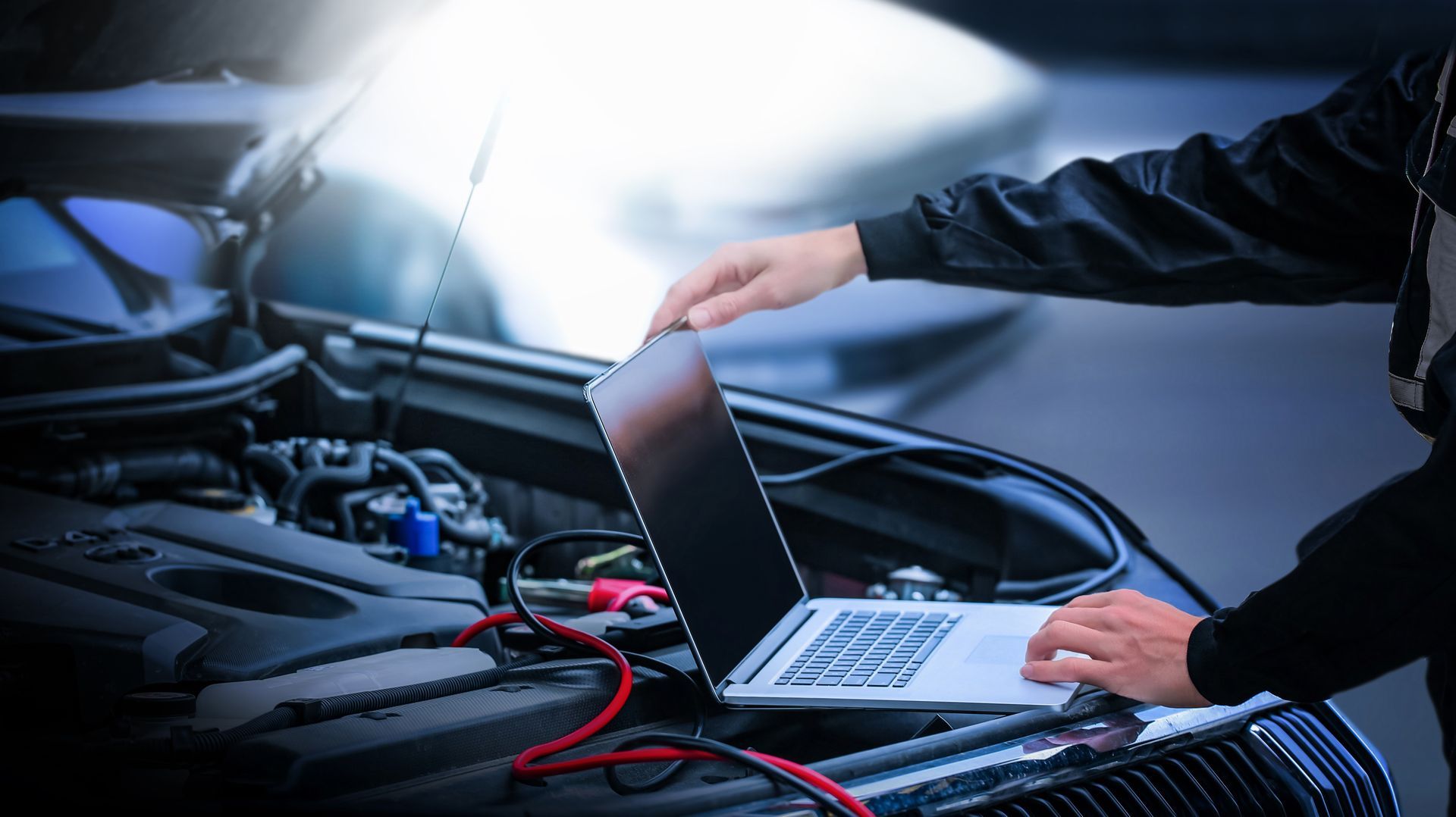
Vehicle diagnostics can feel a bit mysterious if you haven’t gone through the process before. The check engine light turns on and suddenly there’s a sense of uncertainty. Is it something small? Something serious? The best way to get clarity is through a professional diagnostic service. Here’s what to expect when you bring your vehicle to a trusted shop like Jeremiah’s Automotive in Heath, Ohio for diagnostics. The Role of Diagnostic Tools Modern vehicles are built with complex onboard computers. These systems constantly monitor sensors throughout the car. When one of these sensors detects something out of range, it can trigger the check engine light or other warning indicators. Diagnostic tools are designed to communicate with your car’s computer system. They retrieve stored codes that help identify where the issue is happening. These codes don’t always tell the full story, but they give technicians a place to start. What Happens During a Diagnostic Appointment Initial Check-In : A technician will typically ask about any issues you've noticed. Things like strange sounds, reduced performance, or recent repairs all help paint a clearer picture. Code Retrieval : Using a diagnostic scanner, the technician connects to your vehicle’s onboard system and retrieves any trouble codes. These are standardized codes used across most vehicles that point to particular systems or components. Evaluation : The codes may indicate a problem with a sensor, circuit, or component. From here, the technician may run additional tests to confirm the issue. This can include visual inspections, electrical testing, or running the engine in a controlled setting. Interpretation : Experienced technicians use these results along with their knowledge of your specific make and model to narrow down the exact cause. This is where training and familiarity with vehicle systems make a big difference. Reporting the Issue : Once the issue is identified, the technician will explain what was found, what it means for your vehicle, and what repairs may be needed. Common Issues Found Through Diagnostics Oxygen sensor failures Faulty mass airflow sensors Loose or damaged gas caps Misfires in one or more cylinders Catalytic converter problems Battery or charging system concerns Evaporative emission system leaks Some of these issues are simple to resolve. Others may require more in-depth work. The point of diagnostics isn’t to fix the problem immediately. It’s to identify it accurately. Why Drivers in Heath Benefit from Local Expertise The roads in Licking County can take a toll on vehicles over time. Between cold winters, salted roads, and humid summers, it’s not unusual for electrical connectors to corrode or for sensors to fail earlier than expected. Having a technician who understands these local conditions can help narrow down likely causes more efficiently. Why Warning Lights Matter Ignoring the check engine light can cause minor issues to turn into major repairs. Even if your car seems to be driving normally, the problem behind that light could lead to worse performance or damage if not addressed. It’s also worth noting that some warning lights mean your vehicle won’t pass emissions testing in Ohio, which can prevent registration renewal. Getting a diagnostic test as soon as the light comes on helps avoid that situation. How Long It Usually Takes Most diagnostic appointments can be completed within an hour or two, depending on the issue. If additional testing is required or the problem is intermittent, the technician may recommend keeping the vehicle longer for observation. Cost Considerations A professional diagnostic service is typically priced as a flat rate, separate from repair costs. While some shops may advertise free code scans, these usually only involve pulling codes without fully inspecting or confirming the root cause. At Jeremiah’s Automotive, diagnostics are handled by ASE-certified technicians who take the time to fully evaluate the issue and give you a reliable overview of what’s going on. Why ASE-Certified Technicians Make a Difference Certification means the technician has gone through rigorous testing and continues to stay up to date on new technology. With vehicle systems becoming more computerized every year, this training is essential. It ensures that diagnostics aren’t just about reading codes—they’re about interpreting them with the right context. What You Can Do to Help the Process Share when you first noticed the issue Mention any recent services or changes Note whether it happens when the engine is cold, hot, idling, or under load Bring any paperwork from previous shops if applicable These small details help the technician trace the issue more efficiently. When to Schedule a Diagnostic Test When the check engine light comes on If your car starts hesitating, stalling, or struggling to accelerate When fuel economy suddenly drops If dashboard warning lights appear for transmission, ABS, or battery systems After a failed emissions test Regular service appointments can also include light diagnostic work to catch problems early. But if a warning light appears, it’s always best to schedule a standalone diagnostic visit.
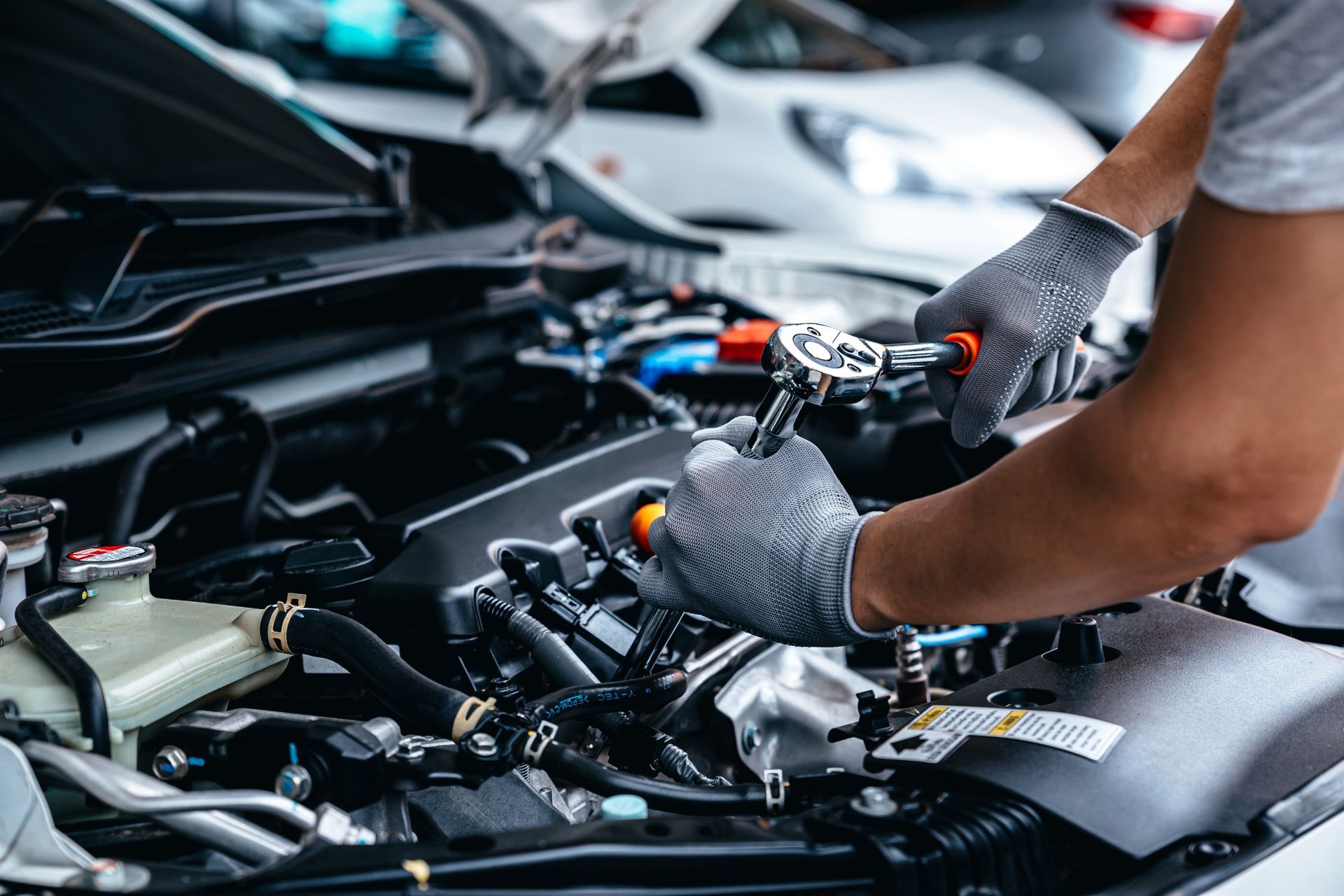
Taking care of your vehicle isn’t just about avoiding breakdowns. It’s about keeping it running the way it should and making sure it lasts as long as possible. In a place like Heath, Ohio, where roads face everything from harsh winter salts to hot summer asphalt, vehicle maintenance plays a bigger role than many drivers realize. Let’s break down why routine maintenance is worth your attention, what it includes, and how a trusted local shop like Jeremiah’s Automotive can help. What is Routine Vehicle Maintenance Routine maintenance is a series of checks and services done at regular intervals to keep your vehicle in good condition. It’s not about fixing things after they go wrong. It’s about making sure those things don’t happen in the first place. These services usually follow your manufacturer’s recommendations and often include oil changes, tire rotations, fluid top-offs, filter replacements, brake inspections, and more. Each vehicle is different, so what your car needs might not be exactly the same as someone else’s. Still, most cars follow similar general schedules, especially in areas where road and weather conditions can be tough like they are in central Ohio. Why It’s Especially Important in Heath, Ohio Ohio drivers face a range of seasonal challenges. In the winter, road salt and cold weather put stress on your vehicle’s underbody, battery, and tires. In the summer, heat can push cooling systems and air conditioners to their limit. In the spring and fall, potholes and debris from storms can damage suspension components or throw your wheels out of alignment. These changing conditions are why preventative maintenance matters here more than ever. A skipped oil change or ignored brake inspection might not seem like a big deal today, but small issues have a habit of becoming big problems quickly. Heath and the nearby Newark area also have a mix of city driving and rural roads. That means your vehicle might be dealing with stop-and-go traffic one day and long stretches of uneven pavement the next. That variety means your maintenance plan shouldn’t be one-size-fits-all. It should reflect the way you actually use your car. Oil Changes and Engine Health Oil changes are one of the most common maintenance tasks, but they’re also one of the most essential. Your engine has a lot of moving parts, and oil keeps those parts lubricated and cool. Over time, oil breaks down and collects debris. If left unchanged, that oil becomes less effective and can eventually harm your engine. For most vehicles, oil should be changed every three thousand to five thousand miles, but modern engines and synthetic oils may stretch that further. If you’re not sure what’s best for your car, a reputable shop like Jeremiah’s Automotive can look up the correct schedule for you. Tire Rotations and Inspections Rotating your tires every six thousand to eight thousand miles helps them wear more evenly. Uneven tire wear can lead to poor handling, reduced fuel efficiency, and a higher chance of blowouts. Heath roads can be rough in certain seasons, especially after a winter of freezing and thawing that leaves behind potholes. A quick inspection during your maintenance appointment can also catch tire damage or worn treads before they become safety concerns. Brake Checks Your brakes are one of the most important safety features on your vehicle. Regular inspections can catch worn brake pads, low fluid, or rusting components early. Midwestern roads mean your brakes are exposed to salt and moisture. That exposure can cause rust, especially on vehicles that don’t get driven often. Catching that early is key. Fluid Levels and Top-Offs Modern vehicles rely on a number of fluids to run properly, including coolant, transmission fluid, brake fluid, power steering fluid, and windshield washer fluid. Each one plays a role in keeping your car running smoothly and safely. Neglecting fluid levels can lead to overheating, poor shifting, or even brake failure. During routine maintenance, a technician can check these levels and top them off as needed. Filters and Clean Air Your car has several filters that need to be changed regularly. The engine air filter helps keep dirt and debris out of your engine. The cabin air filter helps make sure the air inside your vehicle is clean. The fuel filter helps maintain clean fuel delivery to your engine. In Ohio’s changing seasons, pollen, dust, and road debris can clog filters faster than in other places. Replacing them as part of your scheduled maintenance keeps your engine breathing easily and your cabin air clean. Battery and Electrical System Checks Cold Ohio winters are especially hard on car batteries. Low temperatures slow down the chemical reaction inside the battery and can make it harder for your car to start. A quick battery test as part of your routine check can tell you if your battery is still holding a charge or if it might be time for a replacement. At the same time, your technician can check the charging system, starter, and alternator to make sure everything is working properly. Belts, Hoses, and Other Wear Items Rubber parts like belts and hoses wear out over time. Belts can crack or stretch. Hoses can become brittle or leak. These parts may not seem like a big deal, but they keep vital systems like your cooling system, power steering, and alternator running. A good technician will inspect these during your regular visits and recommend replacements when necessary. This kind of proactive care prevents being stranded with a broken belt or overheating engine. Alignment and Suspension If you’ve ever felt your car pull to one side or noticed uneven tire wear, your alignment could be off. Ohio’s potholes and curbs don’t make it easy on your suspension either. During maintenance, your tech can check your alignment and suspension components for wear or damage. Catching small issues early helps avoid bigger problems like worn-out shocks or broken suspension arms. The Value of a Trustworthy Local Shop Routine maintenance isn’t just about what gets done under the hood. It’s also about building a relationship with a repair shop that knows you and your vehicle. Jeremiah’s Automotive in Heath is family-owned and has been serving the area for years. That means they’ve seen just about every kind of vehicle, every kind of problem, and every kind of Ohio weather condition. Working with a local shop means your vehicle gets the kind of attention and advice that fits your needs. It also means you can count on honest feedback about what needs to be done now and what can wait. How Often Should You Schedule Maintenance There’s no single answer for everyone. The best place to start is your owner’s manual. But if you’ve been skipping visits or can’t remember the last time your vehicle was inspected, it’s a good idea to schedule a check-up. Many people in Heath schedule maintenance based on mileage or with the seasons. Getting your car looked at in the fall before winter hits or in the spring after the snow melts can help protect it from seasonal wear. Why It Pays Off Routine maintenance saves money in the long run. It helps prevent bigger repairs, keeps your car safer to drive, and helps maintain fuel efficiency. It’s also one of the best ways to hold onto the value of your vehicle, especially if you plan to trade it in or sell it down the road. Plus, it gives you peace of mind. When you’re commuting to work, dropping your kids off at school, or heading out on a road trip, you want to know your car is going to get you there without problems. Final Thought You don’t need to know everything about cars to take good care of yours. You just need to stick with a routine and partner with a shop that knows what they’re doing. In Heath and the surrounding area, Jeremiah’s Automotive is a go-to for drivers who want reliability, transparency, and quality service.
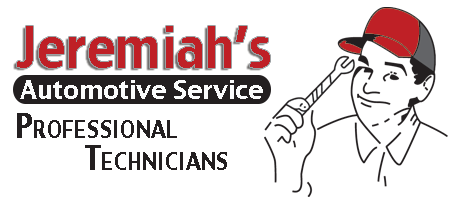
When something’s wrong with your vehicle, you’ve got options. There’s the big national chain with flashy signs and coupons—and then there’s your local, hometown mechanic who’s probably just a few minutes away. So how do you know which one to trust? If you're in Heath, Ohio , and you're weighing the pros and cons, we want to make the choice a little easier. At Jeremiah’s Automotive , we’ve spent years helping local drivers with everything from routine oil changes to major repairs. And while the big names might spend more on advertising, we believe there's real value in choosing a shop that’s rooted in the community—and here’s why. You’re More Than Just a Ticket Number At a national chain, your visit can feel... transactional. You check in, wait your turn, and hope they get to your car quickly. But at a local auto repair shop in Heath , you’re not just a number. You’re a neighbor. You’re part of the same community we live and drive in. When you come into Jeremiah’s, we take the time to get to know you and your vehicle. We remember your name. We know your car’s history. And we care about keeping you on the road—not just checking a service off the list. Personalized Service, Every Time Every car is a little different. Your driving habits, maintenance history, and even where you park can impact how your vehicle performs. National chains tend to use one-size-fits-all checklists and services. But at Jeremiah’s Automotive, we customize your maintenance plan based on what your car actually needs—no more, no less. We won’t push services you don’t need or upsell you on unnecessary repairs. If something does need attention, we’ll show you exactly what we’re seeing, explain why it matters, and talk you through your options. No pressure, no guesswork—just honest advice from a local team you can trust. Faster Turnaround & Easier Scheduling Let’s be honest—nobody wants to be without their car longer than they have to be. National chains often book far in advance or juggle cars across multiple bays, especially during busy seasons. And when they’re short-staffed? Forget it. At our Heath location , we offer quick turnarounds , online scheduling , and clear communication about your wait times. We’re a small, focused team that takes pride in working efficiently without cutting corners. And if you need your car back by a certain time, just let us know—we’ll do our best to make it happen. Supporting the Heath Community Every time you choose a local business, you’re helping that money stay in the community. That means more local jobs, more support for local schools and events, and a stronger local economy overall. We live here. We drive the same roads you do. We sponsor youth sports, show up for local events, and genuinely care about the people we serve. At Jeremiah’s, you're not just supporting a local shop—you’re investing in Heath . Transparency You Can Actually See Ever feel like a big chain is speaking a different language? You’re handed a repair list, a quote, and very little explanation. It can be overwhelming—especially if you're not a car expert. At Jeremiah’s Automotive, we take a different approach. We’ll walk you through what we find under the hood, show you worn-out parts (if needed), and explain what’s urgent versus what can wait. You’ll never feel left in the dark about what’s going on with your car. Consistency You Can Count On When you visit a national chain, you don’t always know who’s working on your vehicle. Different techs come and go, and it can be hard to get consistency in your service. With a local shop, especially one like Jeremiah’s, you’ll see the same faces every time. Our technicians are ASE-certified, experienced, and take pride in doing things right. That means no surprises, no re-explaining your car’s history every visit, and no wondering who’s under the hood. Just real, consistent service from people who care. Fair Pricing (Without the Fine Print) You’ve probably seen those national chain coupons—$29 oil change! Free brake inspection! But when you get to the register, there’s always something extra. Shop fees, required add-ons, exclusions in fine print… it adds up fast. At Jeremiah’s, we believe in fair, honest pricing from the start. We’ll give you a clear breakdown of the work, talk through what’s optional, and get your sign-off before we do anything. No tricks. No gimmicks. Just solid work at a fair price. Local Experience = Local Knowledge We know Heath roads . We know what pothole season can do to your suspension. We know how salt impacts your undercarriage. We even know which neighborhoods get hit hardest in winter and what that means for your battery or brakes. That kind of experience helps us recommend the right maintenance at the right time. It’s a level of local insight you just won’t get at a big national chain. Relationships Built to Last At the end of the day, auto repair isn’t just about fixing cars—it’s about building trust. We want you to feel comfortable every time you walk through our door. We want you to feel confident when we hand you back your keys. And we want you to think of us as your auto repair shop—not just a place you went once when something broke. That’s the power of local. Choose Local. Choose Jeremiah’s. We know you’ve got choices when it comes to where you get your car repaired. But if you want honest service, reliable work, and a shop that genuinely cares about your car and your safety, there’s no better choice than Jeremiah’s Automotive. So the next time your check engine light comes on, your brakes start squeaking, or you just know something isn’t quite right, don’t head to the nearest big-box chain. Come see your neighbors at Jeremiah’s Automotive in Heath, Ohio —where quality, trust, and community come standard. Need to schedule service? Visit us at Jeremiah’s Automotive Call (740) 915-3231 Book online through our appointment scheduler We’re proud to be Heath’s hometown auto shop —and we’d love to earn your trust, one repair at a time.

